With technology advancing daily, chatbots have become a popular tool in the education sector.
From virtual tutors to personalized study plans, these bots are changing how students learn.
Educators can use chatbots in their school's website or through messaging services like Facebook Messenger or WhatsApp, as well as any in-house school apps that may be available.
Everyone associated with the school, including kids, parents, and faculty, will have easy access to them.
Chatbots can make a significant impact on education.
However, they have the potential to significantly improve formal education and public awareness (think about chatbots that help you learn a foreign language on your mobile, e.g., Duolingo bots).
Chatbots, powered by AI, are increasingly being used in mobile educational apps to make studying more exciting and interactive for students. These apps assist educators by lightening the load of routine duties like grading homework and student work.
Chatbots are helpful

Technology has made its way into schools despite the common perception that education is not a very tech-savvy business. Research indicates that education is one of the top five sectors reaping the benefits of chatbots right now.
Think about the professor who created a chatbot to help his pupils before, during, and after class. The chatbot offered comments on presentations, links to supplemental materials, and reminders about upcoming classes.
In 2019, he shared the findings of a survey with 700 or more students regarding their interaction with Ed, the chatbot.
Sixty-three percent indicated they'd like to see chatbots used in all of their classes, and 99 percent said they were satisfied with it.
The value of chatbots in the classroom
While chatbots have many potential applications, their advantages are mainly consistent regardless of context. Some examples of these advantages are:
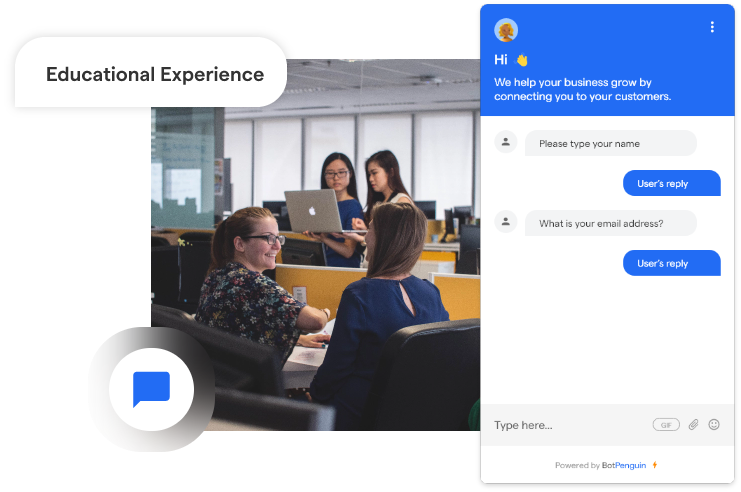
Rather than hearing things secondhand, which might lead to inaccuracies, students can acquire the facts straight from the institution itself.
Sixty-four percent of all internet users say that chatbots' 24/7 availability is their favorite feature. Chatbots provide a mechanism for students and parents to get rapid responses anytime, even though most schools aren't open around the clock.
The needs of a large number of pupils can be met at once. As opposed to having kids individually visit the office of a teacher or administrator, the chatbot can field queries from a large group of pupils all at once.
Another difference between chatbots and people is that chatbots have infinite tolerance and don't get annoyed when a single student repeatedly asks the same question.
The ability to reach out to each individual is a crucial component. Throughout the registration and payment processes, as well as other pertinent matters, schools communicate with students via critical communications. Thus, Chatbots in Schools become essential for institutions to conduct smooth operations.
Student success vice president at Georgia State University Timothy Renick was quoted in the New York Times as saying, "Mass outreach is not sensitive to individual needs." When communicating with a large group of students at once, a chatbot lets you tailor your message to each individual.
Suggested Reading:
Here are 6 examples of how you can use chatbots in Education
Below are the examples of how chatbots can be effectively utilized in the educational landscape:
1. Make information available to students
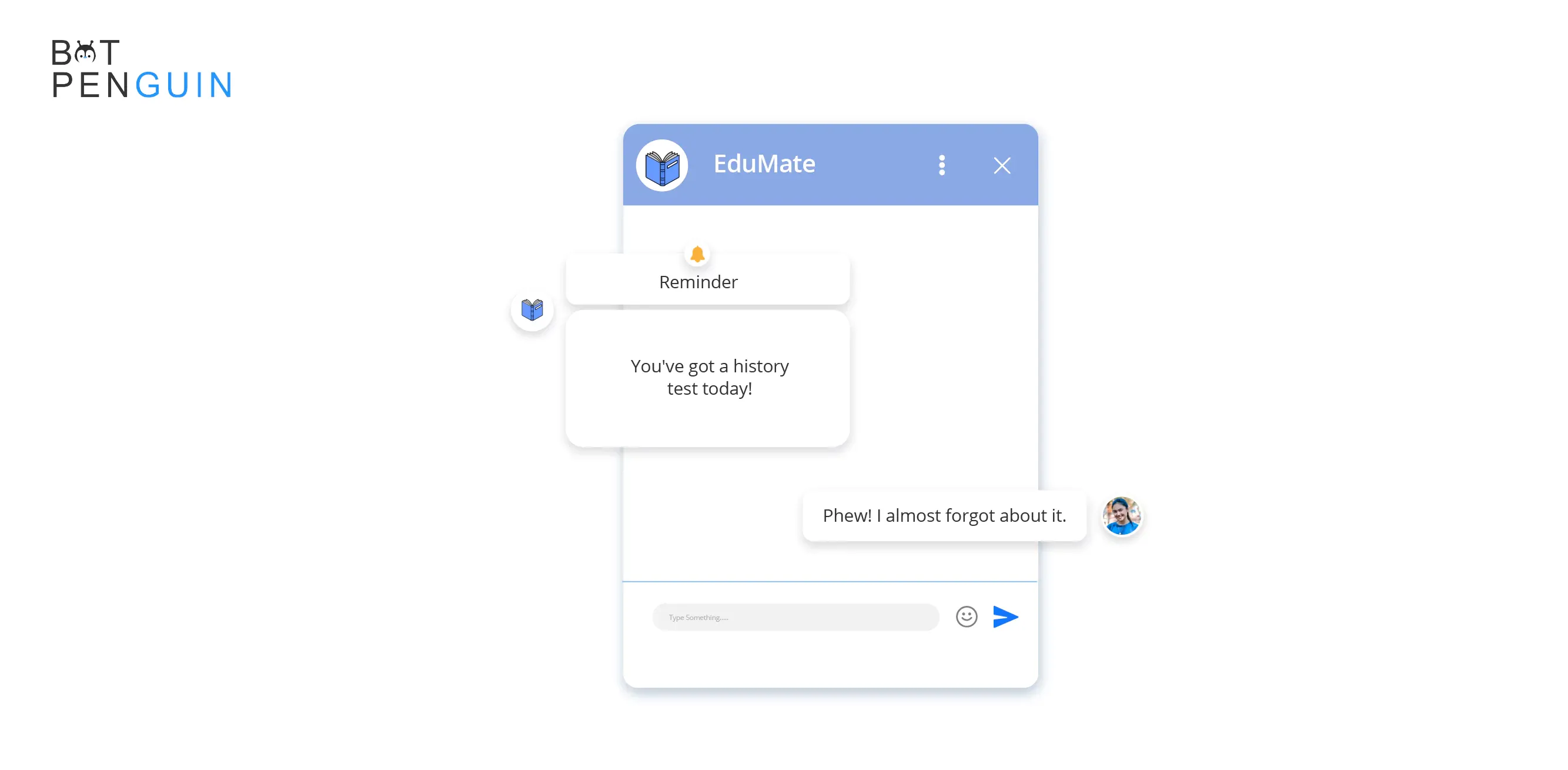
Students, especially at the beginning and end of the year, have many questions concerning their lesson plans, classes, schedules, and school guidelines and need easy access to answers. Answering the same questions repeatedly is inefficient when a teacher has a large style.
A school (or an individual teacher through uploading course-related materials) can educate a chatbot to respond to student inquiries.
Also, new students can rely on the chatbot to help them adjust to their new school. The chatbot can help children navigate the school's physical space, learn about available extracurriculars, and sign up for what seems like fun.
Chatbots can periodically send out reminders to ensure that students don't get behind in their studies (e.g., "You've got a history test today!").
2. Facilitate administrative tasks
Chatbots in education are designed to assist students (or potential students) with administrative tasks and common queries, whether in secondary or higher education.
Think about the potential benefits of chatbots during times of crisis when parents and students have many inquiries that can overwhelm school staff.
Many parents were worried about their children returning to school so slowly after the 2020 epidemic. There was a massive increase in inquiries on health and safety policies, school hours, and required protective equipment as kids returned to the classroom.
3. Providing reminders and support
The chatbot's role isn't limited to answering queries; it may also send out alerts, updates, and other notifications to students and faculty. The school may not have received your financial aid application, or there may be work at the main entrance.
This may be a significant contribution to preventing the "summer melt" or the loss of interest among admitted college students throughout the summer.
Georgia State University saw a 19% decrease in summer dropouts in the first year it used the chatbot Pounce to send personalized reminders and walk students through school processes like submitting immunizations and transcripts and speeding up the FAFSA verification process (federal student aid).
4. Serving as a private instructor
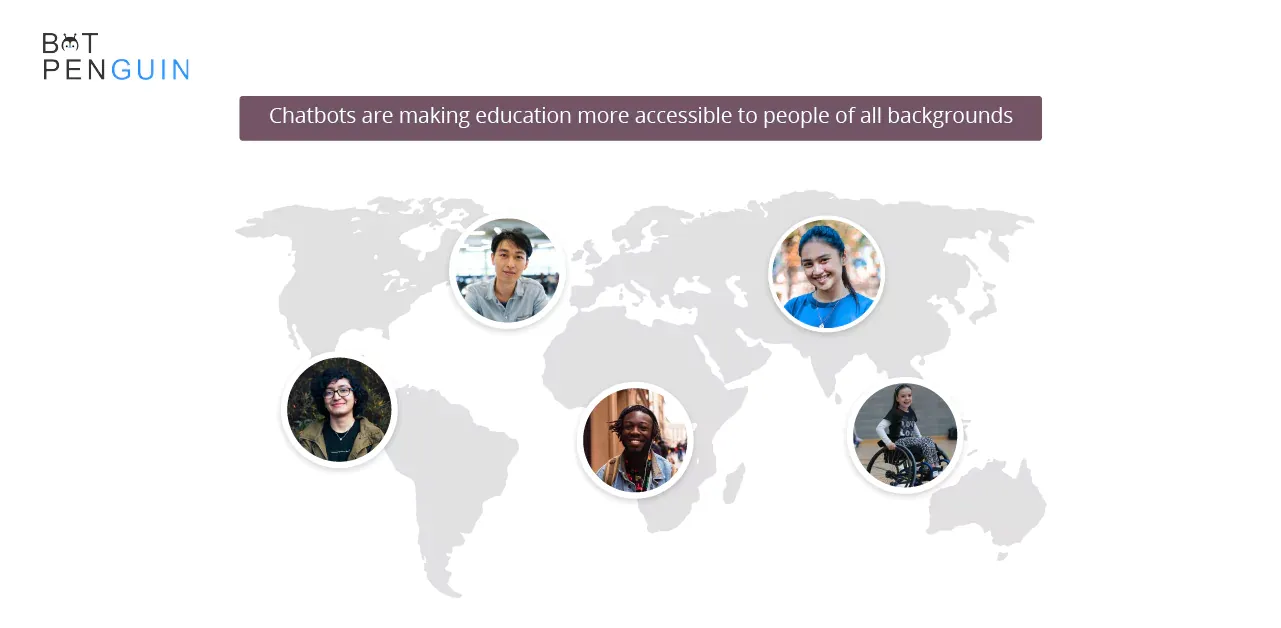
Artificial intelligence chatbots in the classroom can evaluate individuals' preferences and strengths in learning. Teachers can better accommodate their students' unique learning styles using this method. At school, chatbots can do things like:
The chatbot might offer tailored responses depending on each student's specific questions or concerns. Using spaced repetition and other study strategies, the chatbot can aid students in their academic pursuits.
One of the most promising applications of chatbots is their use in making education more accessible to people of all backgrounds. Not all students learn the same way, and others have challenges requiring individualized instruction and special attention.
A chatbot can personalize their education by assessing each student's unique situation and focusing on the areas of study with the most incredible difficulty.
Each student's unique challenges can be addressed, and their learning can proceed at their own speed.
Suggested Reading:Why BotPenguin Chatbot is best for Colleges & Universities
5. Engaging students
There are certainly duller areas of education. Even the most motivated pupils can fall asleep while reading and memorizing, regardless of the subject matter. Students of all ages today are accustomed to quickly locating information through several tools, such as video and search engines.
Instantaneous responses from chatbots for education can provide more engaging learning environments. Bots can use decision trees to help students work through a set of questions and answers to gain a deeper understanding of a subject.
For example, consider Frosty the Penguin, a Quizbot created by a Stanford University study team after discovering that it helped pupils retain information better than flashcards.
Chatbots can access your library and give appropriate content to help students learn, especially if you have interactive content like video lectures. Some chatbots even go so far as to integrate with music apps like Spotify to help students focus while they study.
6. Helping Educators Teach
Similarly, a chatbot can be an effective virtual aide in the classroom. It aids educators in developing comprehensive lesson plans and resources while taking care of mundane activities.
Sometimes a student just can't get the hang of a particular subject. There are several ways in which chatbots can be used to aid in the classroom, including directing students to relevant online resources for further study.
Chatbots in mobile educational apps act as virtual tutors, answering students' questions and providing guidance in solving difficulties. If a student is having trouble understanding a particular concept, they can use these to gain a thorough explanation.
- Teachers' regular activities, including assigning work, grading tests, and checking homework, can also be made more accessible with the assistance of chatbots.
- With the extra time they'll have, educators can focus on giving their children a well-rounded education.
- Conversational agents can help educators with a variety of mundane activities, including,
Course modules, lessons, daily duties, assignments, and due dates are all topics that chatbots can address.
- Student progress can be tracked and evaluated with the help of chatbots by analyzing their written work.
- Chatbots can enhance student learning since they give students immediate, individualized feedback.
- By assessing the user's current level of knowledge, chatbots can point them toward valuable educational resources.
Other than that, educational chatbots can also
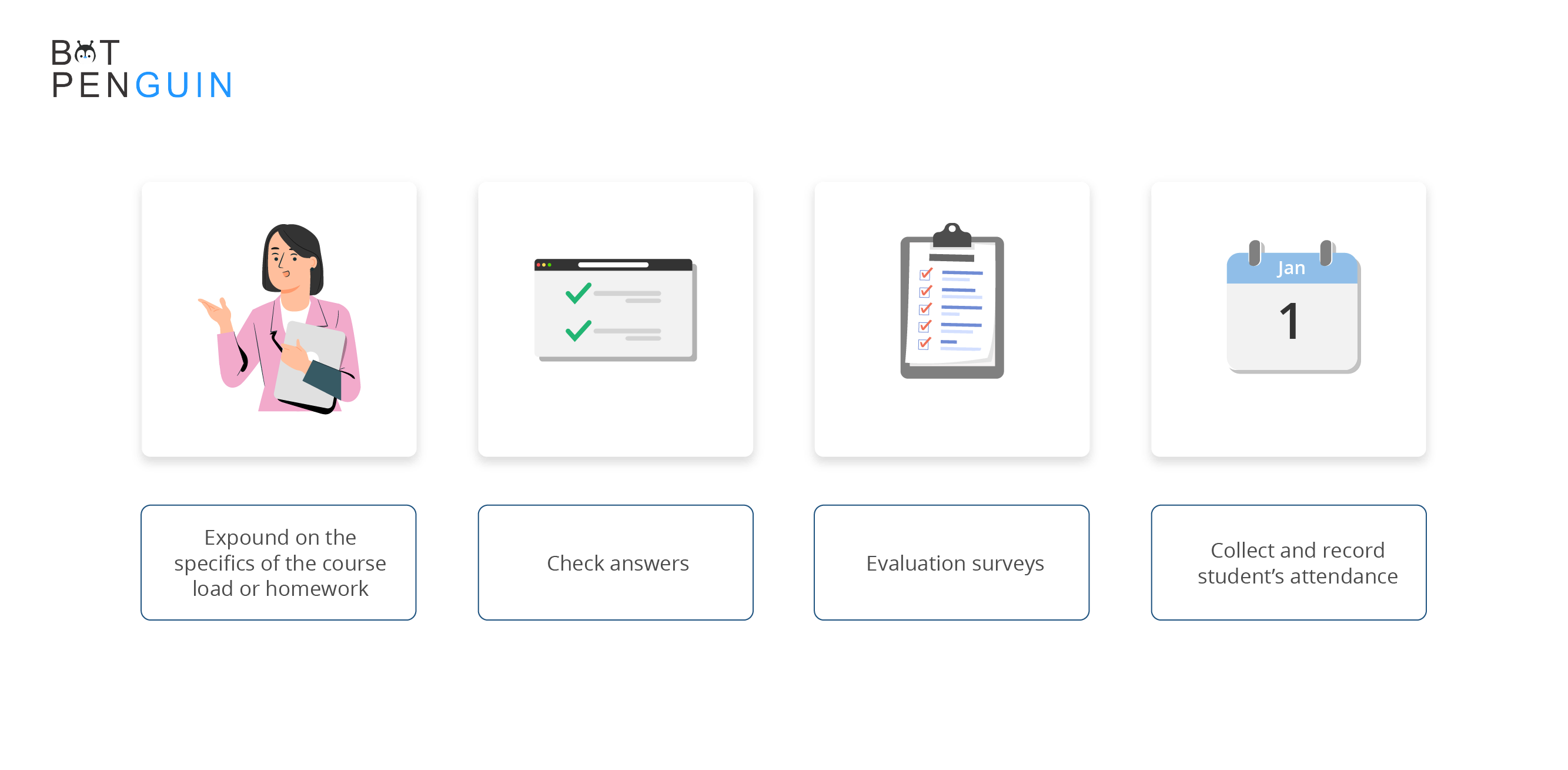
1. Expound on the specifics of the course load or homework
Teachers can use chatbots to ensure students have access to the necessary information without repeatedly answering inquiries about due dates, assignments, and lectures.
2. Check answers
Chatbots can be used to administer, answer, and score multiple-choice quizzes. Suppose machine learning algorithms are appropriately implemented in chatbots in schools. In that case, they may one day be able to grade open-ended activities (such as essays).
3. Evaluation Surveys
Educator evaluation surveys can benefit from the usage of chatbots. Teachers can receive anonymous student ratings of a course or presentation and more in-depth feedback from chatbots.

4. Collect and record students' attendance
As a bonus, the chatbot can be used for supplementary materials for students who missed class or to encourage students to ask questions regarding the lecture.
Sometimes a student just can't get the hang of a particular subject. There are several ways in which teachers can use chatbots to aid in the classroom, including directing students to relevant online resources for further study.
Chatbots in mobile educational apps act as virtual tutors, answering students' questions and providing guidance in solving difficulties. If a student is having trouble understanding a particular concept, they can use these to gain a thorough explanation.
Teachers' regular activities, including assigning work, grading tests, and checking homework, can also be made more accessible with the assistance of chatbots.
With the extra time they'll have, educators can focus on giving their children a well-rounded education. Conversational agents can help educators with a variety of mundane activities, including
Course modules, lessons, daily duties, assignments, and due dates are all topics that chatbots can address.
Student progress can be tracked and evaluated with the help of chatbots by analyzing their written work.
Chatbots can enhance student learning since they give students immediate, individualized feedback.
By assessing the user's current level of knowledge, chatbots can point them toward valuable educational resources.
The Pros
- Chatbots benefit students by providing them with the necessary study materials; they no longer need to rely on Google for academic assistance.
- Artificial intelligence can evaluate a student's performance and tailor a study strategy to their specific needs.
- Improved accommodations are made for students with unique requirements.
- The traditional approach relied on students memorizing rather than comprehending the material.
- A smart tutoring system. Although it has been around for a while, with AI, educators can now examine student data better.
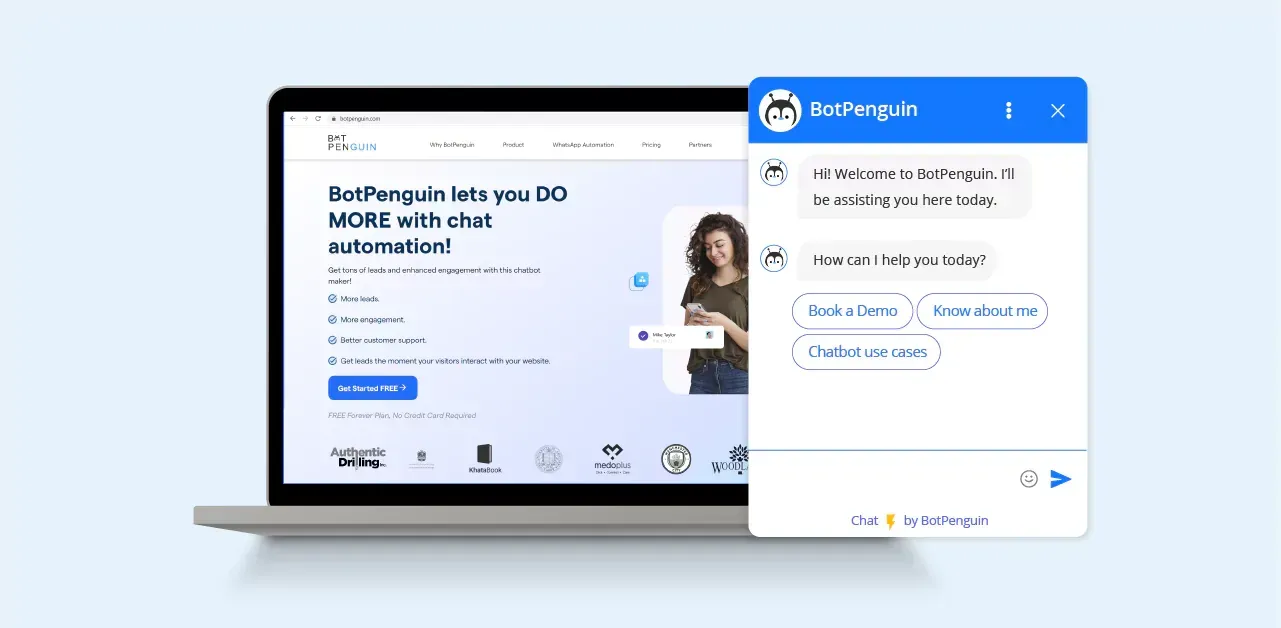
The Cons
A major drawback is the price.
- Institutions need substantial funding to implement chatbots fully. The effect would be felt most keenly in low-income educational districts.
- Using chatbots in the classroom can potentially reduce teachers' and students' opportunities for interpersonal learning.
- Potentially, more people will become unemployed. The increasing prevalence of AI raises the prospect that it could one day replace human educators.
Suggested Reading:
Factors to consider when implementing a chatbot
Selecting well-thought-out software for chatbot development is crucial for successful implementation. If you're looking for a chatbot for a school setting, you can find a company that specializes in this field, like BotPenguin. Still, other providers offer chatbots for use in other sectors.
Make sure you take into account the following:
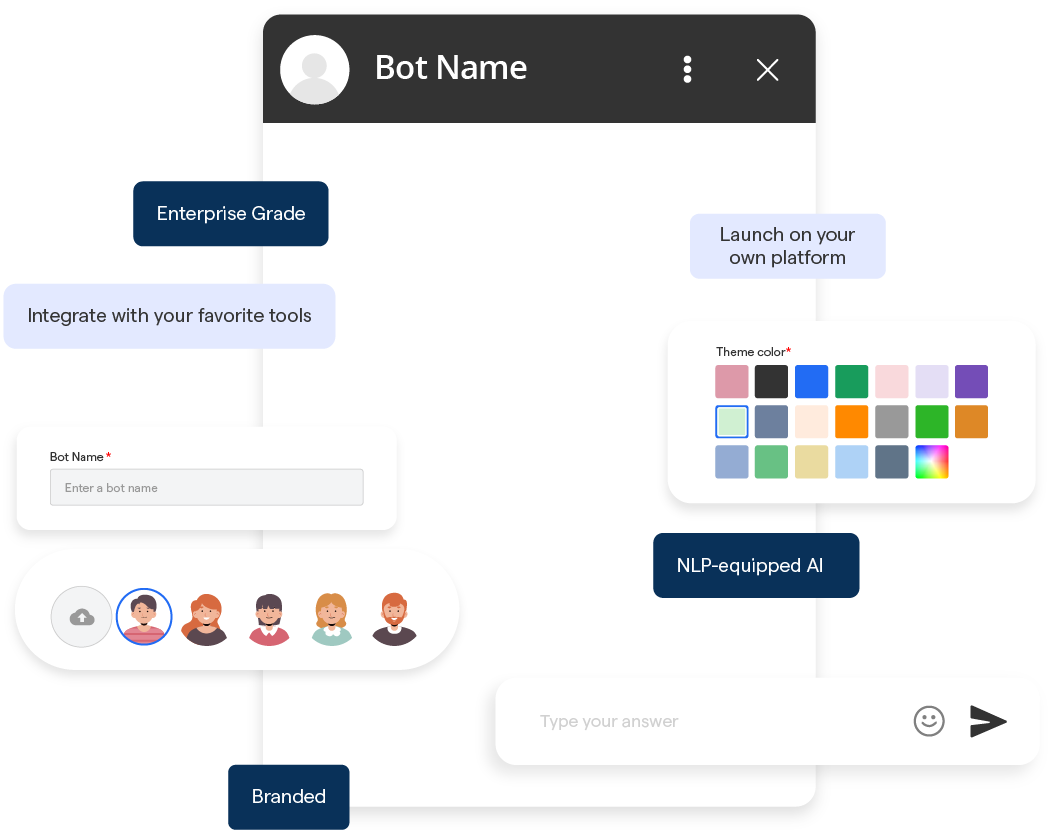
1. Protecting personal information
When working with a student body comprised primarily of minors, you must exercise extreme caution in how the chatbot collects, uses, and keeps information. The same holds for nations where privacy rules such as GDPR safeguard residents of all ages.
2. Programming for AI Chatbots
The success of chatbots depends on the sophistication of their scripts, which in turn depends on the complexity of the questions asked by students and the quality of the replies provided
3. Mediums
It's important to remember that a substantial portion of students might not have access to the apps in which chatbots are implemented (e.g., not everyone uses WeChat, Facebook, or Viber).
It's usually best practice to make your bot accessible via numerous mediums.
As a last point, school administrators may need to address instructors' worries about chatbots in the classroom. Many workers worry that machines will replace them due to the increasing sophistication of AI technology. However, it is safe to say that chatbots will never be able to take the role of human educators.
Instead, bots can take over some of the tedious administrative work, allowing instructors more time to focus on the more important aspects of their jobs, like developing positive relationships with their pupils and preparing them to become productive members of society.
Conclusion
All of these are only a few of the many, many ways in which chatbots might improve the education sector. Without a doubt, the introduction of AI into the classroom has revolutionized the entire process. Chatbots powered by artificial intelligence have profoundly impacted the field of education.
The use of chatbots like these has the potential to significantly improve teacher-student interactions and enliven the classroom experience for students as a whole. Students will gain technological literacy, which is an asset in any field and will aid them in the long run.
Therefore, chatbots will soon be essential for the school system to incorporate a chatbot into education to provide online education faster and more efficiently.
Using a chatbot like BotPenguin not only makes learning more efficient but also makes it more fun and interactive for students.
Try BotPenguin for free today and see the magic happen.


